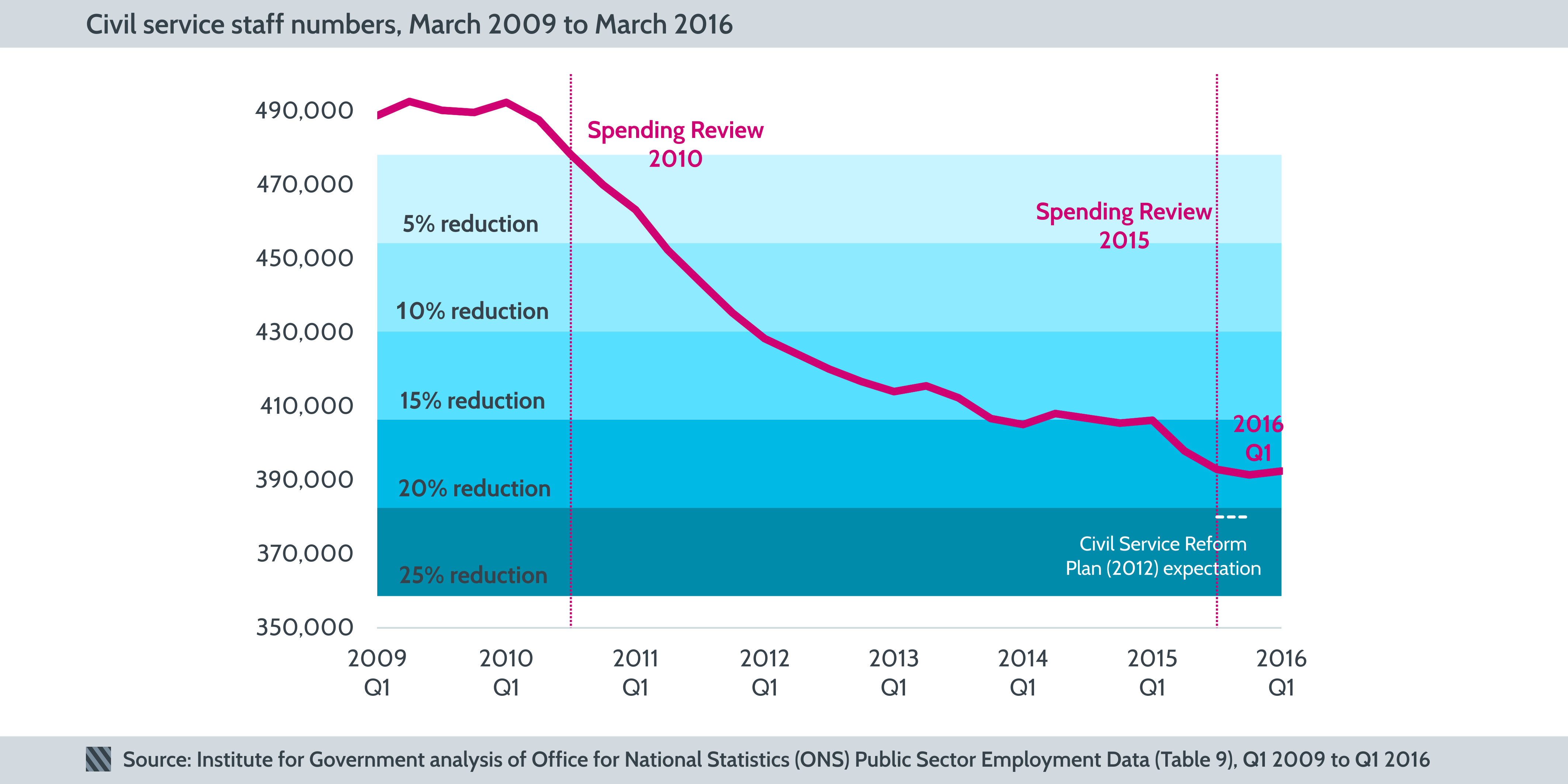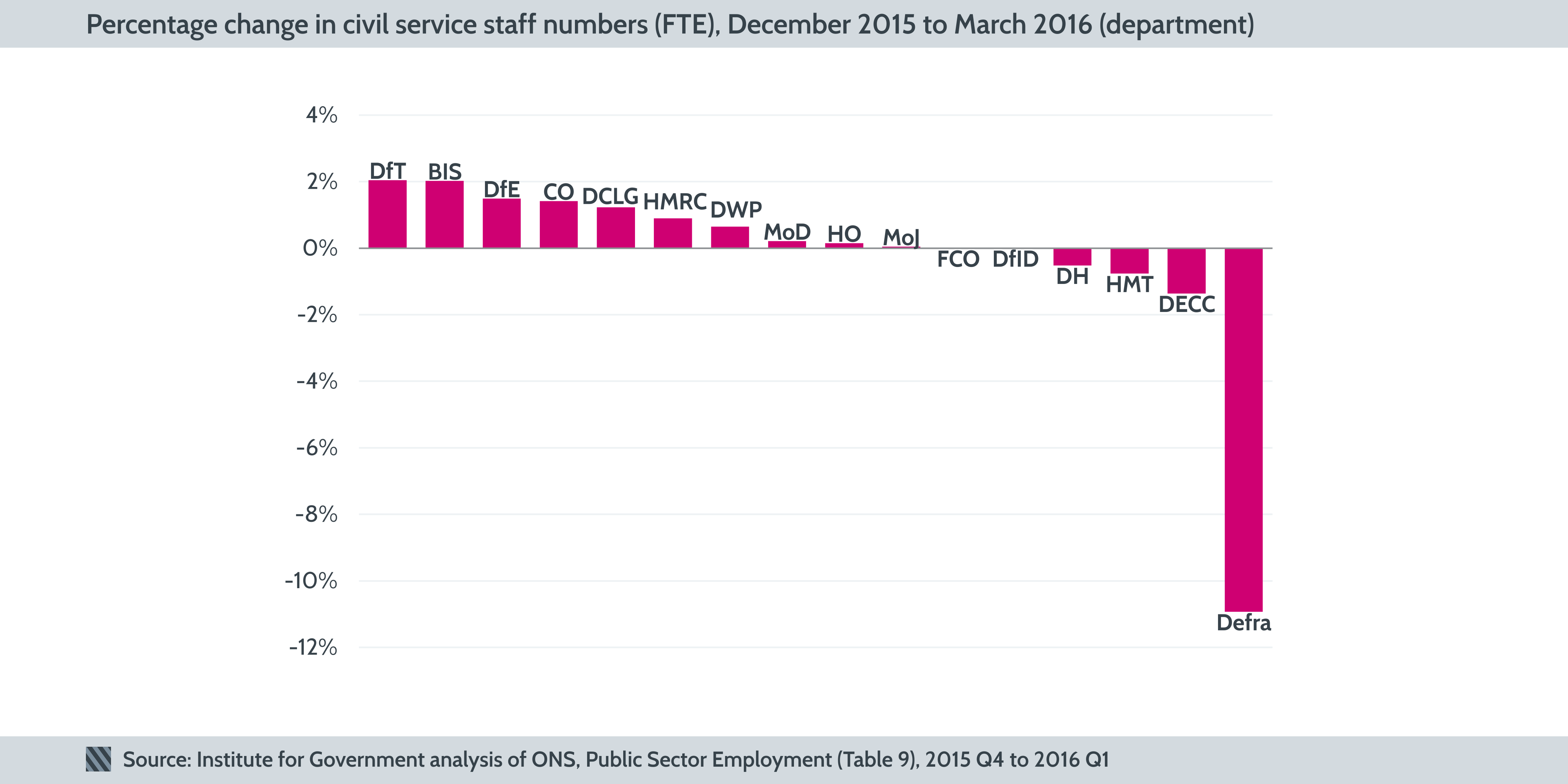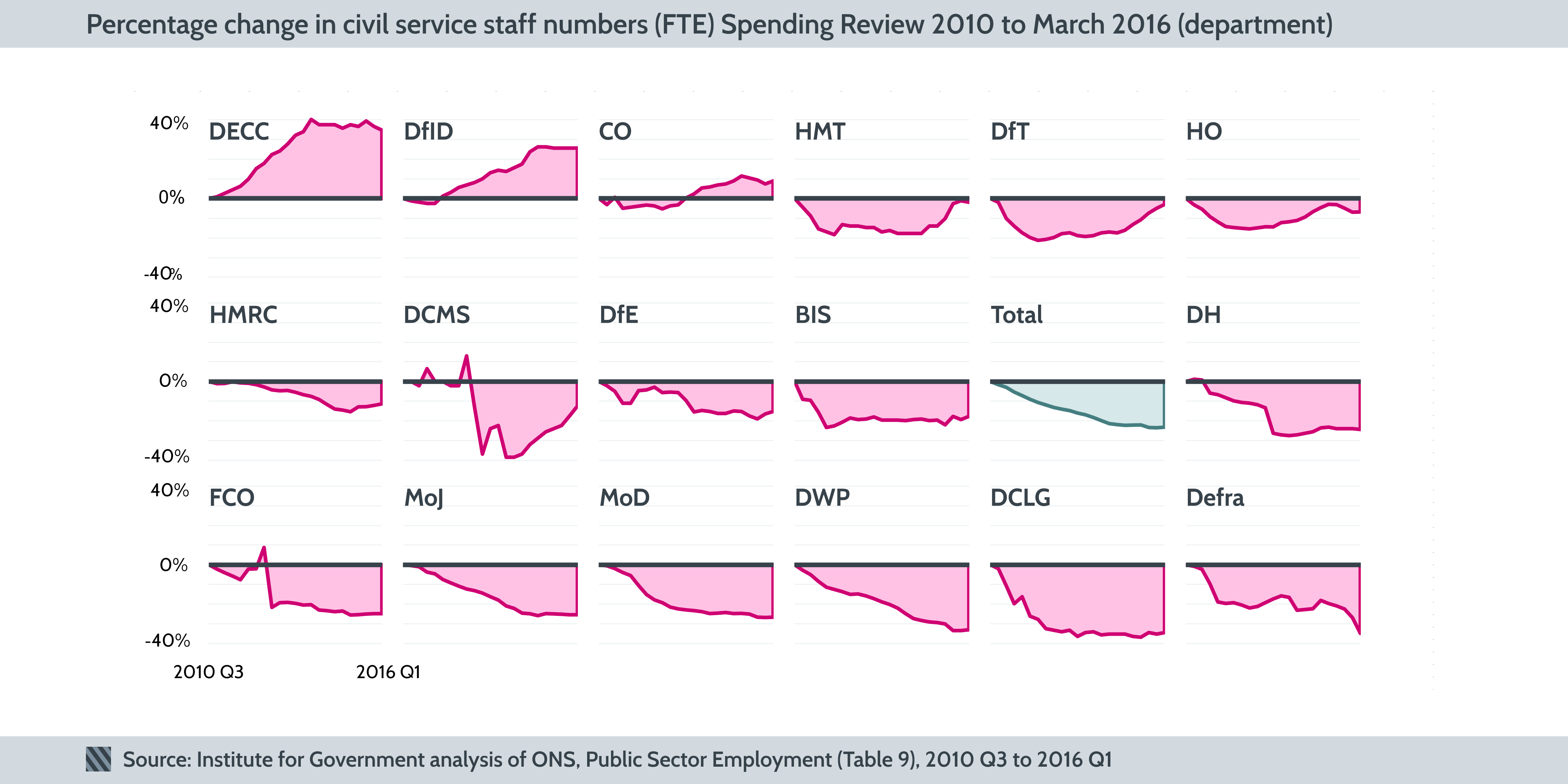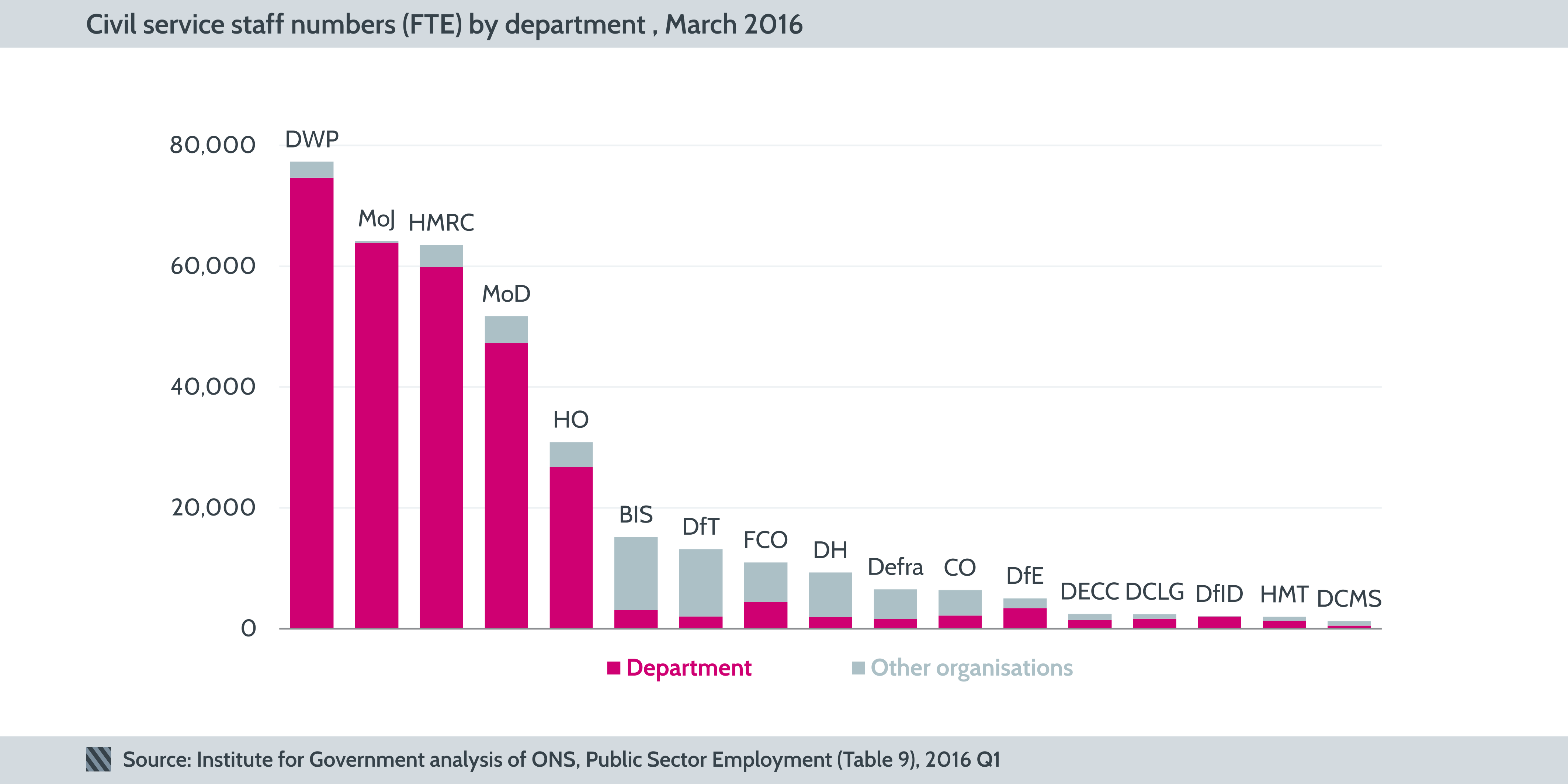The latest Office for National Statistics (ONS) data show a small increase in the number of civil servants over the last quarter. Adam Boon discusses the latest figures.
At the end of March 2016 there were 392,500 civil servants, 1,140 more than the previous quarter - but still a cumulative reduction of 18% since 2010

Civil Service staff numbers have increased at the start of this year, ending three consecutive quarters of decreases. A total of 392,500 civil servants (as measured by full-time equivalent – FTE) at the end of the first quarter of 2016 is a 0.3% increase on the previous quarter, but overall is 18% less than in 2010. This is the first full quarter of data for the period after the Spending Review, and the third full quarter under a Conservative majority government.
As previously highlighted, at the end of 2015 Civil Service staff numbers were 11,360 higher than the estimate of 380,000 set out in the Coalition’s Civil Service Reform Plan (2012). The current government have not provided a new estimate to replace this figure and take us beyond 2015. Cabinet Secretary Sir Jeremy Heywood has said that there is no predetermined target. As the Institute for Government has noted, workforce planning is not set out in the public Single Departmental Plans, with only hints included in individual departmental documents and announcements.
In the first quarter of 2016 staff numbers increased across 10 departments, whilst Defra had another quarter of steep decreases

Though the percentage increases for HMRC and DWP are relatively small, because the departments are large they account for most of the overall increase this quarter (560 for HMRC and 490 for DWP). DECC is down for a second consecutive quarter, having grown fairly consistently and sizeably over the previous five years. Defra’s reductions stand out compared to other departments.
HMRC has previously set out an ambition of employing 52,000 FTE by April 2016, but the latest figures leave them with 59,860 FTE. During a recent Public Accounts Committee hearing, HMRC said they had recruited new staff, partly in response to a substantial increase in helpline waiting times.
Defra and DCLG have experienced the deepest cumulative reductions in staff numbers since 2010

Within the total figures for the period since 2010, individual departments’ staff numbers display more recent trends.
Some departments are broadly holding staff numbers steady (for example FCO, DCLG and DfID). Despite recent quarterly decreases, Cabinet Office has returned to an upward trend. Defra continues the recent trend of a steep reduction in staff numbers. These figures show that since 2010 Defra’s staff numbers have fallen by 35%, which brings it level with DCLG in terms of percentage reduction. Some departments have set out more details of planned reductions over the next few years. BIS, for example, announced plans in May to modernise the department, with the aim of saving £350 million. This will include BIS reducing its presence outside London by closing its office in Sheffield (we have previously discussed the changing geography of the Civil Service). The plan involves ‘reducing operating costs and associated headcount by 30 to 40%’. As of the end of Q1 2016, BIS have 15,140 staff across the departmental group, having seen a minor increase (20) over the start of the year.
The MoD are another department which has set out workforce plans, with the intention of reducing the number of civilians it employs ‘by almost 30%’ (to 41,000) over the course of this Parliament. The latest figures show that across the departmental group, following a minor increase of 60 civil servants, the number of staff is currently 51,680 FTE.
DWP, MoJ, HMRC and MoD remain the departments with the largest number of civil servants

Changes in the last quarter leave the ranking of departments by staff numbers unchanged from the previous quarter. The largest departments remain DWP, MoJ, HMRC and MoD.
- Topic
- Civil service